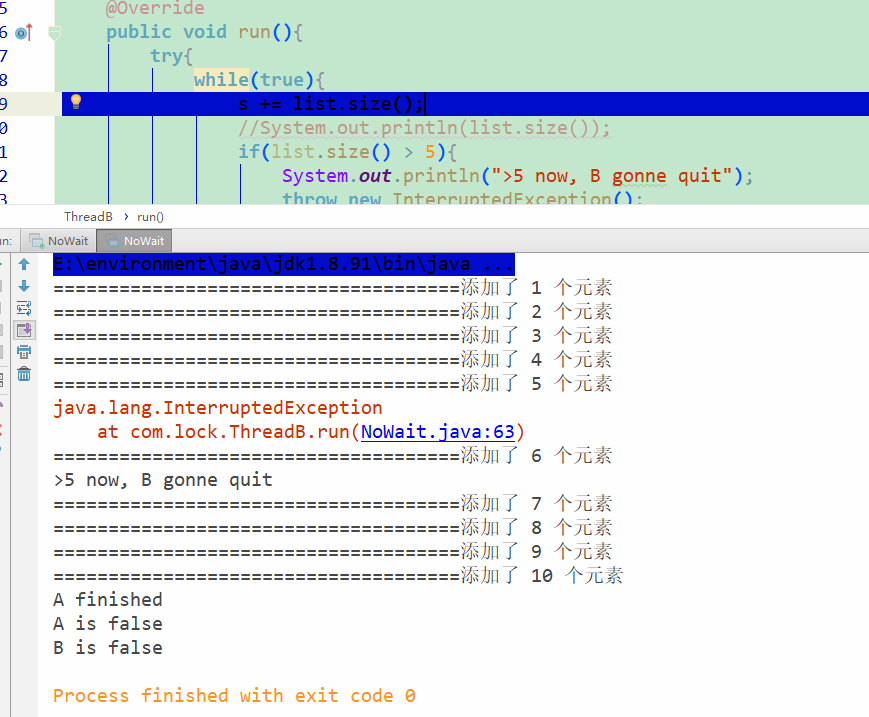62,629
社区成员
 发帖
发帖 与我相关
与我相关 我的任务
我的任务 分享
分享package com.lock;
import java.util.*;
import java.util.concurrent.CopyOnWriteArrayList;
/**
* Create by @author Henry on 2018/5/4
*/
public class NoWait {
static volatile ArrayList list = new ArrayList();
public static void main(String[] args) throws InterruptedException {
ThreadA a = new ThreadA(list);
a.setName("A");
a.start();
ThreadB b = new ThreadB(list);
b.setName("B");
b.start();
Thread.sleep(10000);
System.out.println("A is " + a.isAlive());
System.out.println("B is " + b.isAlive());
}
}
class ThreadA extends Thread{
private ArrayList list;
public ThreadA(ArrayList list){
this.list = list;
}
@Override
public void run(){
try{
for (int i = 0; i < 10; i++) {
list.add(i);
System.out.println("=====================================添加了 "+(i+1)+" 个元素");
Thread.sleep(100);
}
} catch (Exception e) {
e.printStackTrace();
}
System.out.println("A finished");
}
}
class ThreadB extends Thread{
String s;
private ArrayList list;
public ThreadB(ArrayList list){
this.list = list;
}
@Override
public void run(){
try{
while(true){
//s += list.size();
//System.out.println(list.size());
if(list.size() > 5){
System.out.println(">5 now, B gonne quit");
throw new InterruptedException();
}
}
} catch (InterruptedException e) {
e.printStackTrace();
}
}
}

